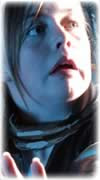Marco Polo

Following immediately from their claustrophobic experience in the TARDIS, the travellers find themselves on an icy mountain slope somewhere on Earth. Barbara and Ian speculate that it could be the Andes or the Alps, but Susan correctly guesses that they are in the Himalayas, on the roof of the world. The previous adventure still haunts the travellers, though, and the Doctor reveals that one of the TARDIS power circuits had burned out and left the ship stranded without power. They are rescued by the Venetian merchant Marco Polo and his companions, who are en route to Peking to pay visit to Kublai Khan in China of 1289.
My thoughts on this adventure are going to be handled a bit differently as I did not actually see the episodes. In the mid 1970s, the BBC made a decision to systematically purge its archive of programme recordings that they felt were no longer useful for broadcast and could not be re-sold on foreign markets. Many episodes of Doctor Who were lost in this clearing of house, the 7 episodes comprising Marco Polo amongst them. Over time film copies of the lost episodes were returned to the archive by collectors and overseas television stations, and while some stories returned intact, others returned incomplete. Marco Polo did not return in any fashion, and is still (hopefully) out there awaiting rediscovery. Or some greedy so-and-so has it and is hoarding it for himself and is really annoying millions of people across the world, putting him on par with George W Bush these days. But I digress. The sound recordings for all the "missing" episodes were preserved and have been released on CD over the years, with guest narration (in this case it is by William Russell, who played Ian Chesterton in the series) to fill in the blanks and keep the story running, so while I can't watch the complete series I can still enjoy it either listening in my car, or on a train, or on the bike at the gym. It is on the success of these releases and a few radio plays in the 1980s and 1990s that Big Finish would build their library of audio only adventures (see my first blog for their details and website) and keep Doctor Who going.
It is only when I try and explain the missing episodes situation to people that I realize how hard it is to be a Doctor Who fan. If it's not enduring the sneering of fans of other shows about the lack of flashy special effects and low budget sets, then it's the sheer lack of availability of the entire series. Right now there are 108 episodes of the show missing, some of them respresenting pivotal moments in the show's history, and damn if it isn't frustrating to try and enjoy something that isn't all there. Star Trek fans will never know the frustration seeing as that franchise has been syndicated left right and centre and just refuses to go away, so in the end they may just get bored with their show (god knows I got bored with it a long time ago) while we Whovians sit and wait and hope for more to turn up. My friend Jamie would laugh and say "Those episodes were lost for a reason!" but that's just him refusing to allow me my fun. *sigh*
Even in audio form, though, Marco Polo is compelling. This is the first historical adventure of the series, a theme which will continue for years, where the only elements of science fiction are the travellers and the TARDIS itself. With the ship broken down our regulars are made allies of Marco Polo, but he intends to give the TARDIS to Kublai Khan as a gift in hopeful exchange for his release from the Khan's services. The Doctor must not only scheme to get his ship back and get everyone away to safety, but must also be wary of the treacherous Tegana, a warlord emissary on an anything but peaceful mission to Peking. Tegana manages to cast suspicion on the travellers, prompting Polo to confiscate the key to the ship lest the Doctor finish his repairs and escape with his friends. The journey to Peking is a long one across the Gobi desert and into China, and over 7 weeks of original broadcast the viewer would actually get the sense of the TARDIS crew being along for the ride for a long time, and not just parking for a few hours, sorting out a local alien invasion and then going again. Unlike my complaint against an episode of The Daleks, this long trek does not suffer from any dull moments; the dialogue between the characters is alive and witty, and the tension surrounding the attempts to escape with the TARDIS palpable even without a visual presence. I really really wish I could have seen this one, even if my imagination conjures up much more extravangant settings and effects than the BBC could have managed back in 1963. But mine is certainly not a unique request. I have had the opporunity to speak with a delightful Scottish lady named Jessie MacAuley, who actually remembered this episode, and she told me it was very good, so I have at least one sort-of review from someone who saw it with her own eyes. Who knows, maybe one day I will get to see it myself.
NEXT EPISODE : THE KEYS OF MARINUS
Labels: Barbara Wright, Ian Chesterton, Susan Foreman, The 1st Doctor







